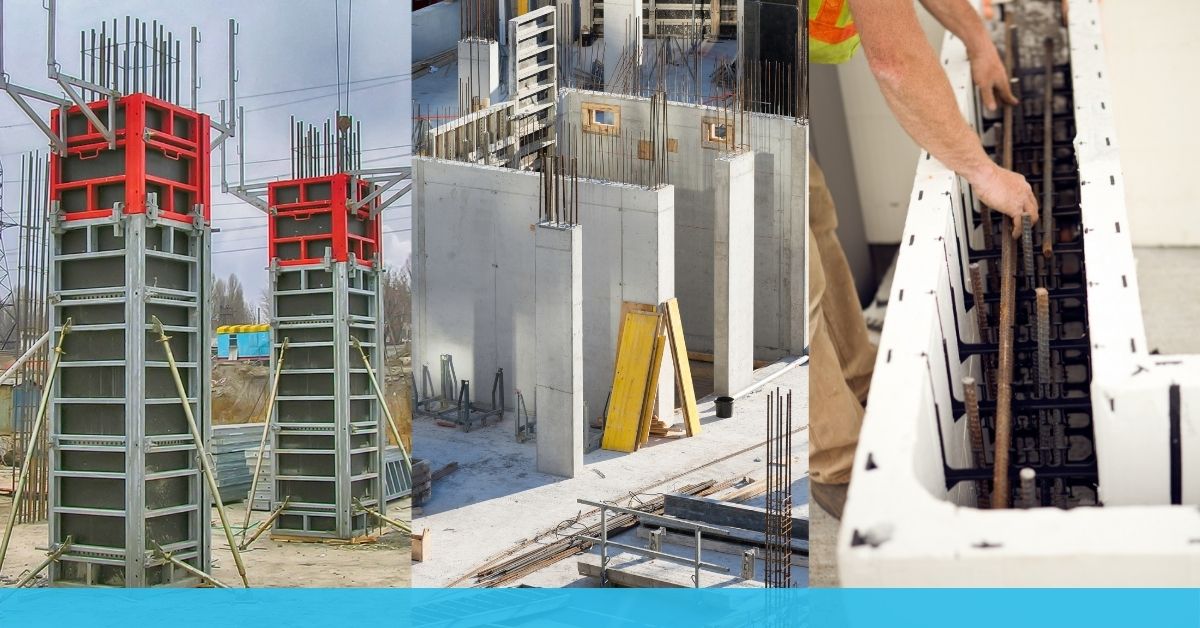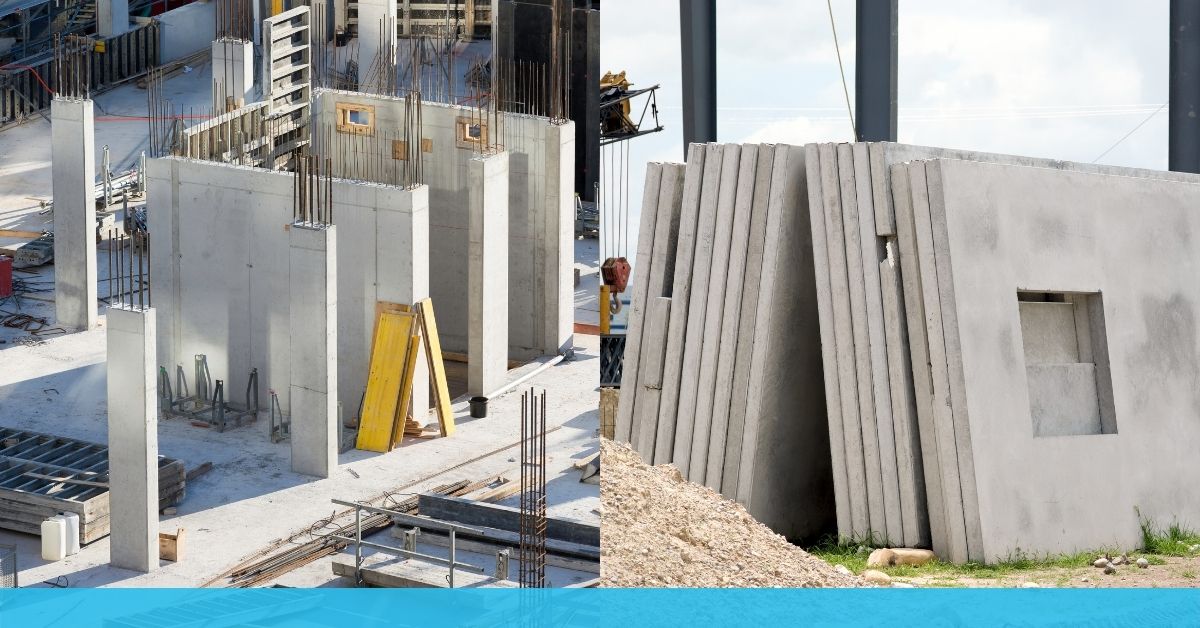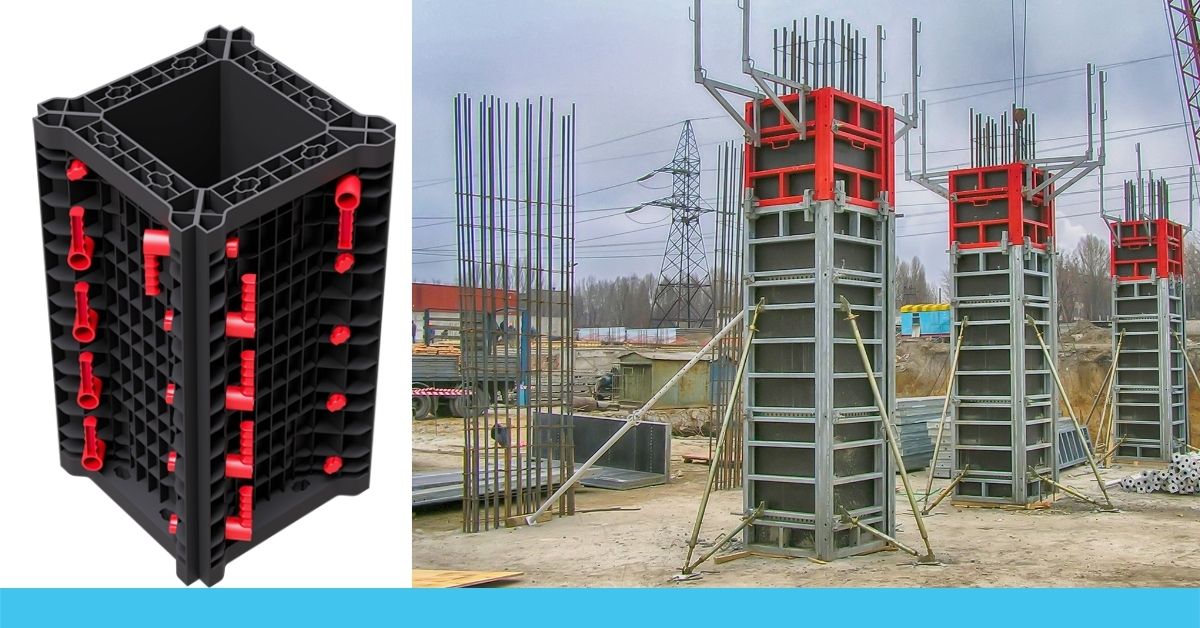
Concrete forms are among the most crucial aspects of any construction project. These forms are responsible for keeping the fluid cement in place by acting as a solid mold.
Until the concrete hardens and takes the desired shape, these structures will help the concrete stay compact. Concrete forms also make it easier for construction workers to deal with building walls and roofs.
There are different types of concrete wall forms available in the market today. Each has its distinct characteristics that make them ideal for specific use cases. In addition, each concrete form has its benefits and drawbacks, so it is critical to understand each one before selecting one for your project.
This article will show you the different types of concrete forms, how they work, and help you what type of concrete form you need for your construction project.


Concrete wall forms are precast systems used to hold concrete. Once the poured concrete hardens, it will create sturdy and stable forms.
Although they’re different from steel framing, they share some similarities because concrete wall forms are made with steel framing responsible for holding the engineered wood. You will typically see concrete wall forms used on areas such as piers, large walls, and foundations.
They’re a much better alternative to wooden forms, which can only support a limited amount of weight.
The individual blocks are bound together using latches or pins. Builders will tie them up to avoid disruption once the concrete pouring starts.
Different factors such as shapes and sizes also play a role when using concrete wall forms. Some manufacturers and suppliers even offer custom-sized concrete wall forms, which are acquired by concrete forming contractors depending on the requirements for the project.
Also known as formwork, foam concrete forms are one of the most non-traditional types of concrete forms. You will rarely see them on construction sites, but they’re used in cases where the benefits they provide are optimum for the project. The methods these forms follow are rather unconventional too.
Unlike most concrete forms, fluid concrete is poured upside down into the concrete foam formwork. Since the concrete is fluid, it adapts to the temporary mold of the formwork, allowing for the desired finish once the concrete hardens. Formworks are usually made from unconventional materials such as acrylic glass or laminated boards.
As mentioned earlier, it’s pretty rare to see formworks into action. So instead, builders will typically use these forms whenever they need the concrete to mold into a particular shape or design. The temporary mold will hold the concrete as it hardens, resulting in a structure with a distinctive and artistic look.
Steel concrete forms are made out of steel. While people may argue that these concrete forms are not durable and can’t handle enough work without developing rust, they can’t deny the usefulness of steel concrete forms in the construction industry. Contrary to popular belief, these forms can last more than 2000 work cycles — it only needs to be appropriately maintained.
It’s one of the most effective replacements for traditional wooden concrete forms. Compared to wooden boards, steel can’t absorb the moisture produced by the concrete poured inside the frame.
This property opens up fewer chances for errors or mishaps once the builders remove the steel-concrete. Steel concrete forms also offer many benefits, such as flexibility, adjustability, and durability. These reasons are why steel concrete forms are ideal options for large construction projects.
Manufactured or precast concrete forms are made of engineered wood or metal sheets placed between metal framing. The metal framing encloses the wood or metal sheets using pins and latches, and ties are used to keep the sheets uniformly distanced from each other. These concrete forms are reusable and ideal for creating projects that need custom sizes.
Manufactured concrete forms are known for their quality and durability. Precast forms are made from controlled environments, top-tier for quality and withstanding natural elements.
The accelerated curing process precast forms are solid and durable. What’s more, they’re ideal for soundproofing and have impressive fireproof attributes.
If you prefer heavy-duty forms, your best bet is gang form systems. These are manufactured forms made with either steel or aluminum frames that match plywood faces. They can function when attached or as a single large firm.
One of the benefits of gang forms is how fast forming placements can be done daily. Not only that, but routinely positioning them in strategic positions can increase safety and accuracy. These forms are typically used for retaining walls, bridge abutments, and water treatment facilities.
Their highly accurate dimension control and simple design make gang form systems ideal for large-scale projects requiring exterior construction.
Commonly known as column formworks, adjustable column forms are molds made from materials such as steel, aluminum, and plastic, by which the wet concrete is poured to achieve the builder’s desired shape and size for the project. Once the concrete hardens, the formwork will be removed, but permanent column formworks typically remain as a part of the construction.
The size and shape of the column formwork will depend on the construction project’s needs. To make control easier during the pouring stage, horizontal clamps made from either steel or timber are used with column molds.
The head of the column formwork supports the beam formwork. However, there are also times when the column formwork is cast to the side of the beams.
Perhaps the most common and easily accessible concrete forms for building columns, buildings, piers, and outdoor signages are paperboard column forms. These forms are made from cardboard, making them easy to transport either manually or by crane. They come in various diameters and are cut to size on the site.
Even if they’re made from cardboard, these column forms have rain-resistant technology that helps them avoid getting wet due to weather and sudden downpour. Not only that, they’re arguably the most eco-friendly concrete form option available in the market today.

Aside from column forms made from cardboard, some are made from plastic. Plastic column forms are cost-effective and reusable, and they are easily stackable, making them easy to set up and remove whenever necessary. They are also waterproof, UV resistant, and will never rust, unlike the concrete forms made from metals.
Plastic column forms are ideal for designs that incorporate curves and tight radii. Since other concrete forms can’t be bent, these column forms are becoming the perfect option for concrete forming contractors who not only want to use versatile materials but also materials that are reusable and lightweight.
Finally, we have handset forms, one of the most practical concrete forms accessible today. They are straightforward to assemble and use. They’re easy to make with a hammer, and their lightweight boosts productivity. As a result, they’re ideal for use cases like walls, columns, and foundations.
There are different types of concrete forms suited for various applications. Some of them are lightweight and can be easily transported from one place to another, while others are heavy-duty and will require the help of heavy machinery to move them. Knowing the type of concrete forms will help you choose the suitable construction material you’d need for your project.
We Deliver. Anywhere in the Tri-State area. Call today.


